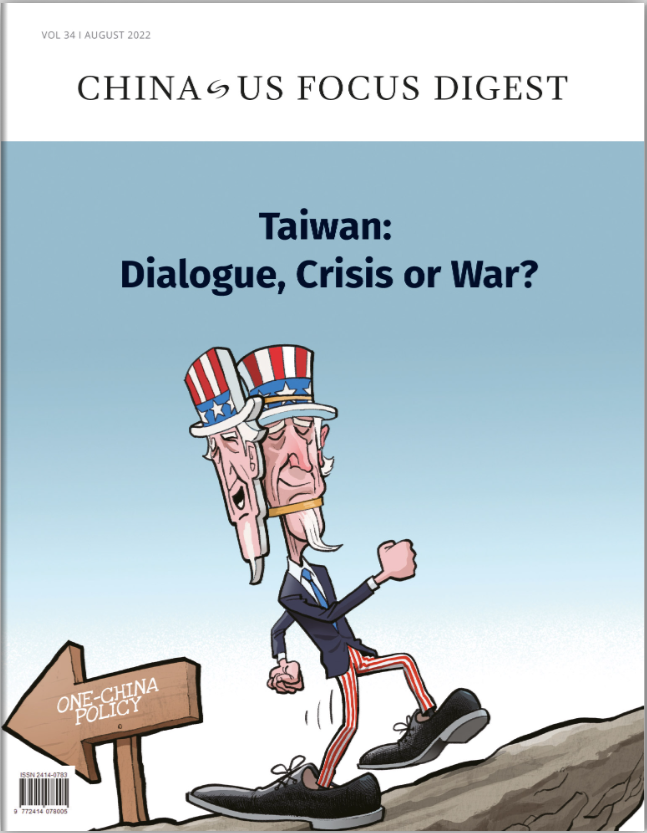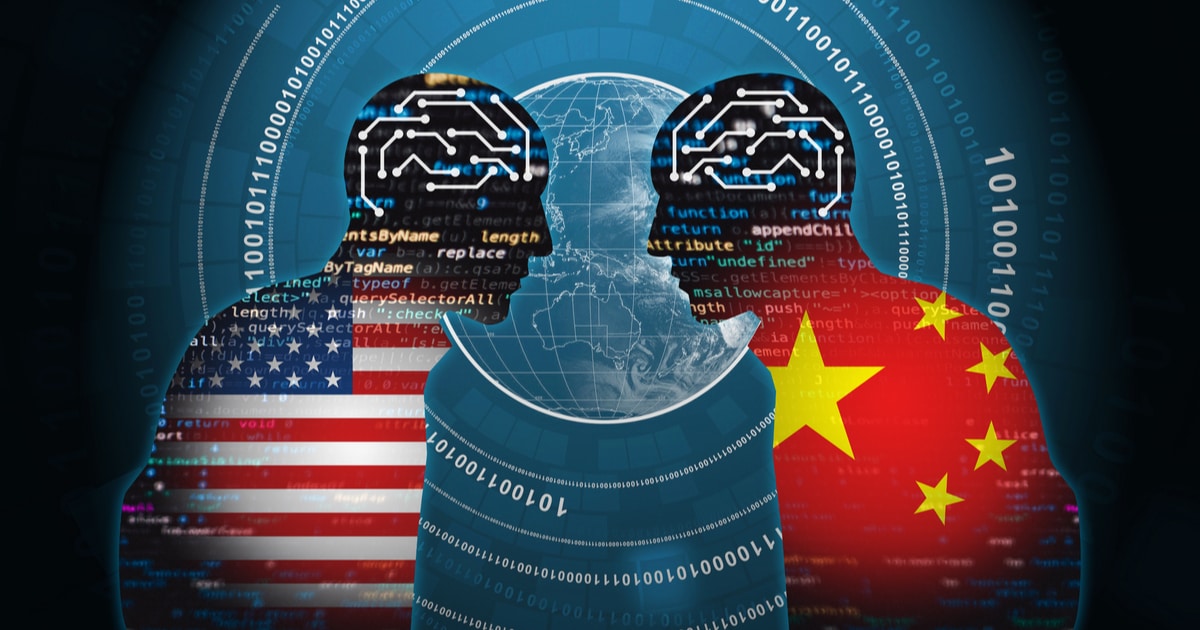
For the past few years, prominent diplomats and scholars of U.S.-China relations have worried that the nearly half-century-long absence of major war in East Asia might come to an end as a result of the drastic deterioration of the bilateral relationship. These worries have reached an unprecedentedly elevated level following the visit of U.S. Speaker of the House Nancy Pelosi to Taipei this August.
Beijing’s exceptionally strong reaction, which has included dispatching missiles, warships, and warplanes into the air and seas around Taiwan, has sent the unambiguous message that the Chinese leadership is prepared to use force. From the perspective of this rising authoritarian global power, Washington’s de facto support of Taiwan independence (of what the Chinese perceive to be a “runaway province”) challenges China’s “vital core interest.” The aggressive military drills by the People’s Liberation Army (PLA) have notably crossed the so-called “median line” in the Taiwan Strait. In addition, the PLA has fired missiles targeting seven sea areas surrounding the island of Taiwan, including the far side of the island facing the Pacific, the region frequently navigated by U.S. naval vessels. This development was seen by some experts as a move akin to rehearsing a blockade.
Speaker Pelosi was neither the first, nor will she be the last, prominent American leader to visit Taiwan. Washington clearly has become more explicit in its military support of Taiwan. “The Taiwan Policy Act of 2022,” a bipartisan bill being considered on the floor in the U.S. Congress, proposes that the United States designate Taiwan as a “major non-NATO ally,” the status granted to Japan, South Korea, and Australia. Beijing regards this U.S. policy as the official abandonment of the “one China policy” by the United States. In the view of the Chinese leadership, this bill, if passed, will leave China with no other choice but to resolve the Taiwan question by force.
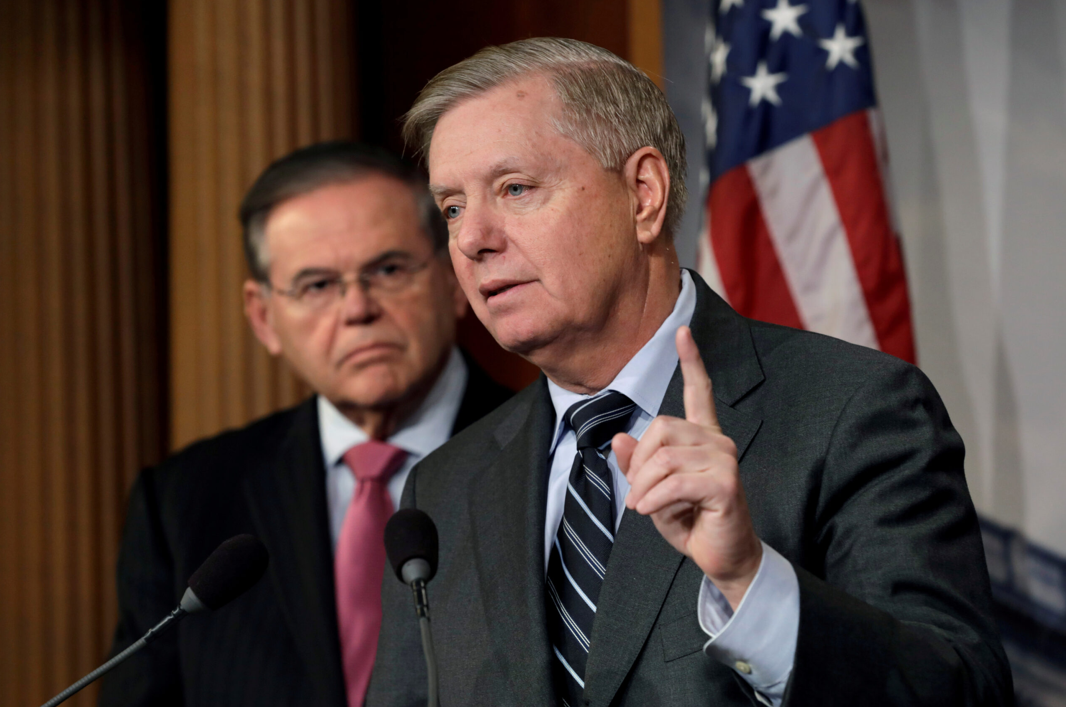
FILE PHOTO: U.S. senators Lindsey Graham (R-SC) and Foreign Relations Committee Chairman Bob Menendez (D-NJ) are the two authors of the Taiwan Policy Act of 2022.
While China speaks about One-China Policy, America is planning to discuss the Taiwan Policy Act 2022 in September.
Notedly, analysts in China, the United States, and Taiwan have now given more thought to when these three parties will unavoidably engage in war rather than whether it will happen. Many analysts also assess how war would likely unfold. But surprisingly, except for Dr. Henry Kissinger and a few others, very few have highlighted the fact that a war over the Taiwan Strait would be between two artificial intelligence (AI) superpowers. The extensive application of AI in warfare is arguably inevitable, which will likely escalate from a limited conventional or proxy war into a rapidly spiraling high-tech war on the one hand and magnify miscalculation and misinformation on the other.
Any serious student of warfare should be alert to this would-be first AI war in history and explore all means to prevent such a cataclysmic war in which everyone would lose.
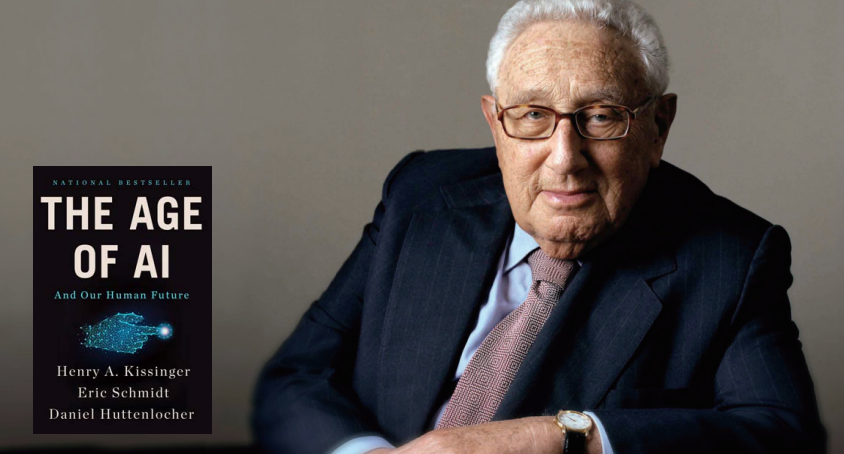
U.S. Former Secretary of State Henry A. Kissinger and his book The Age of A.I.
In an interview with the German newspaper Die Welt in April 2021, Kissinger warns China and U.S. to guard against an “all-out” artificial intelligence conflict, and urges U.S. to ramp up its AI.
Sober warnings from American strategic thinkers
Both China and the United States carry some responsibility for the dangerous downward spiral of the world’s most consequential bilateral relationship. Several of America’s most distinguished strategic thinkers, scholars, and journalists have been explicitly critical of Pelosi’s provocative visit to Taiwan, not to mention President Biden’s ineffectiveness at preventing the ongoing downward spiral. Stunningly, Henry Kissinger, Graham Allison, and Thomas Friedman all have warned that Washington may be heading toward a situation in which the United States is simultaneously plunged into military conflicts with a nuclear-armed Russia over Ukraine and a nuclear-armed China over Taiwan. In the words of Dr. Kissinger, the increasing animosity between the United States and China over the Taiwan Strait risks a global “catastrophe comparable to World War I.”
A major war between two superpowers will most likely result in enormous casualties. In fact, even during the three wars in East Asia in which the United States engaged between the post-WWII period and the mid-1970s, a quarter of a million American lives were lost. The death tolls of people in East Asia were much higher. There is no comparison at all between the Chinese Communist troops then and the PLA forces today, as the People’s Republic of China (PRC) is now the second largest military power in the world.
Professor Cho-yun Hsu, a distinguished historian and a member of the Academica Sinica in Taipei, was recently quoted in media outlets on both sides of the Taiwan Strait: “If there is a war between China and the United States, both countries (and Taiwan) will suffer devastating consequences, and half of the world will be destroyed.”
Cautiously optimistic views and their limitations
Understandably, given the well-grounded argument that neither China nor the United States can achieve a “total victory” by destroying the other without destroying itself, many people believe that both sides will therefore be very hesitant to go to war against the other. As my Brookings colleague Ryan Hass, who previously served as director for China, Taiwan, and Mongolia on the National Security Council in the Obama administration, recently observed, “If war arrives in the Taiwan Strait and involves PRC, Taiwan, and U.S. forces, it is difficult to imagine a scenario whereby any party could prevail and come out strengthened by conflict.”
That may explain why there is no enthusiastic public support in the United States or Taiwan for military conflict with the PRC. As for Beijing, long-standing Chinese military strategy espoused by ancient philosopher-strategist Sun Tzu, including that, “The supreme art of war is to subdue the enemy without fighting” (buzhan er quren zhibing), is perhaps particularly relevant regarding China’s hesitance to use force to achieve unification with Taiwan. Taiwanese are always regarded in Beijing’s official narrative as “flesh and blood compatriots” (gurou tongbao). As for Beijing’s strategic thinking regarding the trend in Washington calling for abandonment of the “one China policy,” commentary has frequently called for “promoting the fighting spirit, but not breaking into war” (dou er bupo), which reflects a more cautious approach on the part of the Chinese foreign policy establishment.
While these cautiously optimistic views are all valid to a certain extent, it is important to also be clear minded about the fact that several key factors point to a different and far more pessimistic scenario. These factors include:
1) The drastic surge of ultra-nationalistic and anti-Washington sentiments among the Chinese public during this ongoing Taiwan Strait crisis.
2) The increasingly prevalent assessment by the Chinese leadership that Washington will not give up its determination to use issues including human rights, Hong Kong, Xinjiang, and Taiwan (on each of which Speaker Pelosi has left her legacy) to destabilize, divide, and dismember China.
3) The growing consensus in Zhongnanhai that the chance for peaceful reunification is so slim that the Taiwan question can only be resolved militarily, or in the words of a prominent advisor to the Chinese leadership, there is an “urgent need for rethinking the strategy for reunification and policy toward the United States.”
4) The rapid elevation of risk for incidents resulting from the frequency of warship navigation and warplane flight drills by all three parties (PRC, the United States, and Taiwan), as well as American allies.
5) The increasing risk for incidents coinciding with “the breakdown in all direct channels of communication between Beijing and Taipei as well as Beijing and Washington.”
Arguably the most important factor that highlights both the danger and potential for quick escalation of military conflict and the urgent imperative to prevent such an outcome lies in the fact that the United States and China are the world’s greatest AI superpowers. The outbreak and advancement of such a war will likely have exceptional features and will differ profoundly from many other wars, including the ongoing Russia-Ukraine war.
Click to read the latest issue of China-US Focus Digest
The potential for high-tech war over Taiwan
The Russia-Ukraine war has been largely a land war, and the U.S. and NATO have not provided air support as requested by the president of Ukraine. Although naval warships have participated in the battle, their roles have been quite limited. In contrast, the prospect of war over the Taiwan Strait will differ completely based on both the island’s geography and the strategic objectives of the forces involved.
According to a November 2021 report on China’s military by the U.S. Department of Defense, in such a battle, the PLA will vigorously challenge the United States in the domains of air, land, sea, digital networks, and space. More specifically, according to the same source, the PRC has commenced building at least three solid-fuel Intercontinental Ballistic Missile (ICBM) silo fields, which will cumulatively contain hundreds of new ICBMs.
China is a late comer as it adopts joint operations in warfare. For the first five decades of the PRC, the Chinese military utilized the Russia military model, which heavily emphasized the use of land forces. Until around the turn of the century, especially during the past decade under Xi’s leadership, the Chinese military has placed a high priority on joint operations among various forces, largely following the U.S. military model. Former Party leader Jiang Zemin declared that the mission of the PLA is to win high-tech local wars over Taiwan. Xi Jinping’s emphasis on the leapfrog development of aerospace and AI through the military reforms over the past few years has accelerated the country’s military modernization.
It is interesting to note that the Chinese space military corps –– the Space Systems Division (hangtian xitong bu) under the PLA Strategic Support Force –– was founded at the beginning of 2016, about four years prior to the creation of the United States Space Force (USSF). In December 2019, President Donald Trump signed the National Defense Authorization Act (NDAA) for fiscal year 2020 and established the USSF, the sixth branch of the American armed forces. Similarly, the Japan Air Self-Defense Force recently formed a space warfare squadron. The Japanese government also established an electronic warfare corps in 2021 and a networks security corps in 2022.
More significantly, under the leadership of Xi Jinping, China has adopted a military–civil fusion (MCF, junmin ronghe) development strategy, which blurs the distinction between the military and civilian applications of many leading technologies, including big data, semiconductors, nuclear technology, aerospace technology, aircraft engines, shipbuilding, 5G, robotics, and AI. According to a recent report by Graham Allison, in the U.S.-China competition in these areas, China has already become No. 1 in the world or will overtake the U.S. within the next decade. Perhaps more accurately speaking, the United States and China are co-leaders in most of these areas in the world today.
China-US AI competition: Research, applications, and resources
In the area of AI, the Chinese government and the private sector both have made huge investments over the past decade. Consequently, China and the United States have been seen as two AI superpowers because of their leadership in research, publications, patents, and applications. Chart 1 shows the dominant roles of China and the United States in terms of scholarly journal articles published on “machine deep learning” and “deep neural networks.” In 2015, China and the United States were in the first tier, which was far ahead of the second tier of other developed countries.
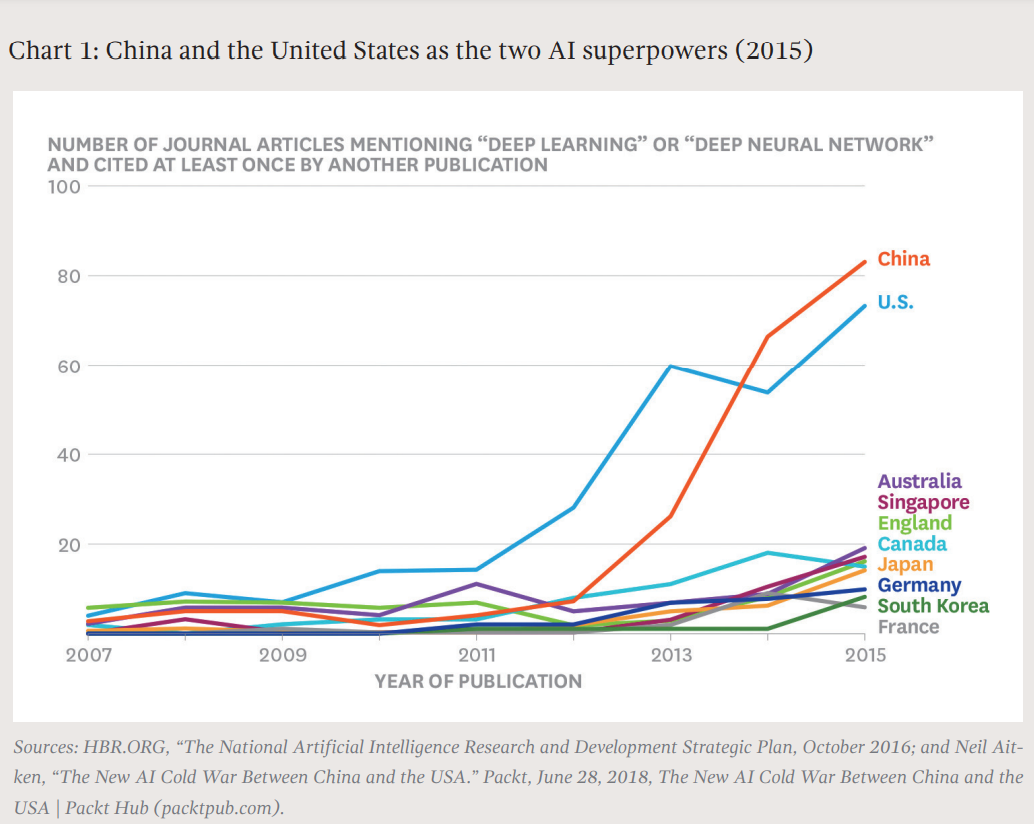
A 2022 report on AI published by Stanford University’s Institute for Human-Centered Artificial Intelligence presents the rapid growth of AI patent filings in the case of China (see Chart 2). In 2010, the patent filings from China accounted for only about 12 percent of the global total and rose to 52 percent in 2021, compared with the United States (17 percent) and the EU and UK (4 percent). The percentage of patent filings by other countries, including Japan, India, Australia, Canada, Russia, Singapore, and South Korea, was insignificant.
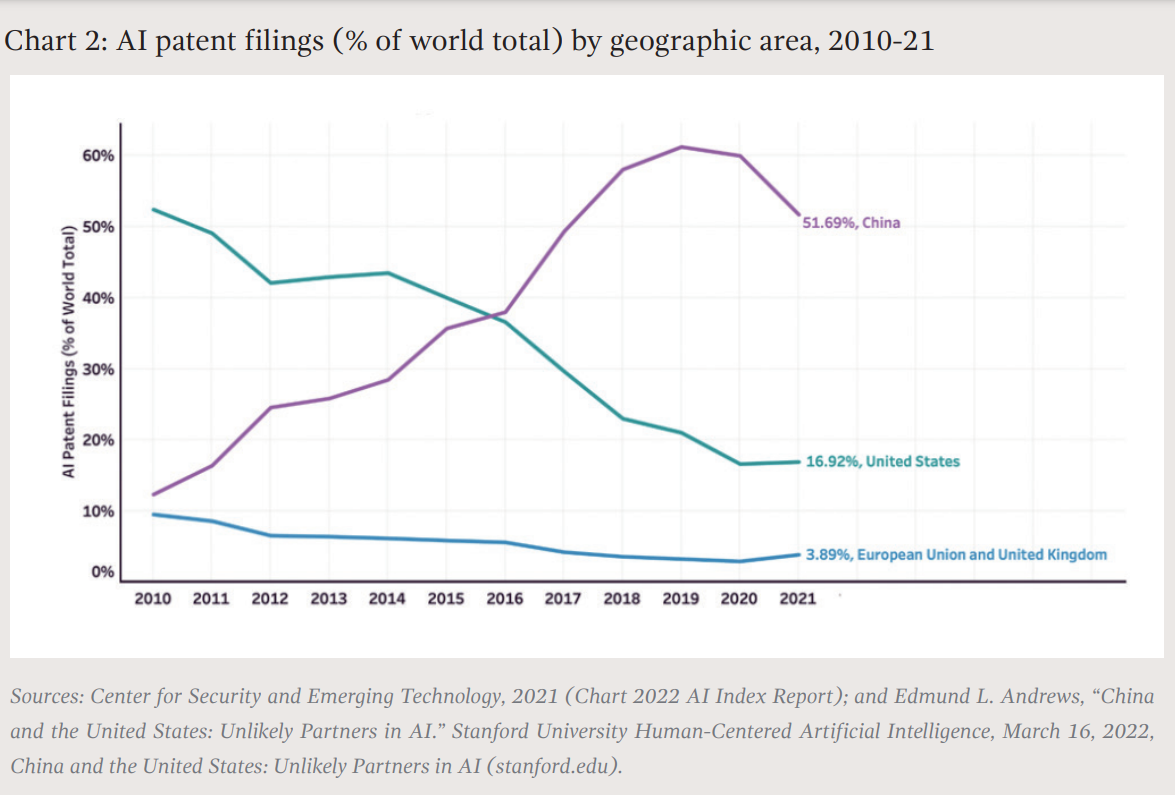
In terms of private investment in AI, the United States has been way ahead of other countries including China. Chart 3 shows that the amount of private investment in the United States (US$149 billion) has been double that of China (US$62 billion) over the past decade. Other countries such as the UK, India, Israel, Canada, Germany, and France were even further behind. It should be noted, however, that among those private investors in AI in the United States, a significant number have PRC backgrounds according to the FBI and some U.S.-based researchers.
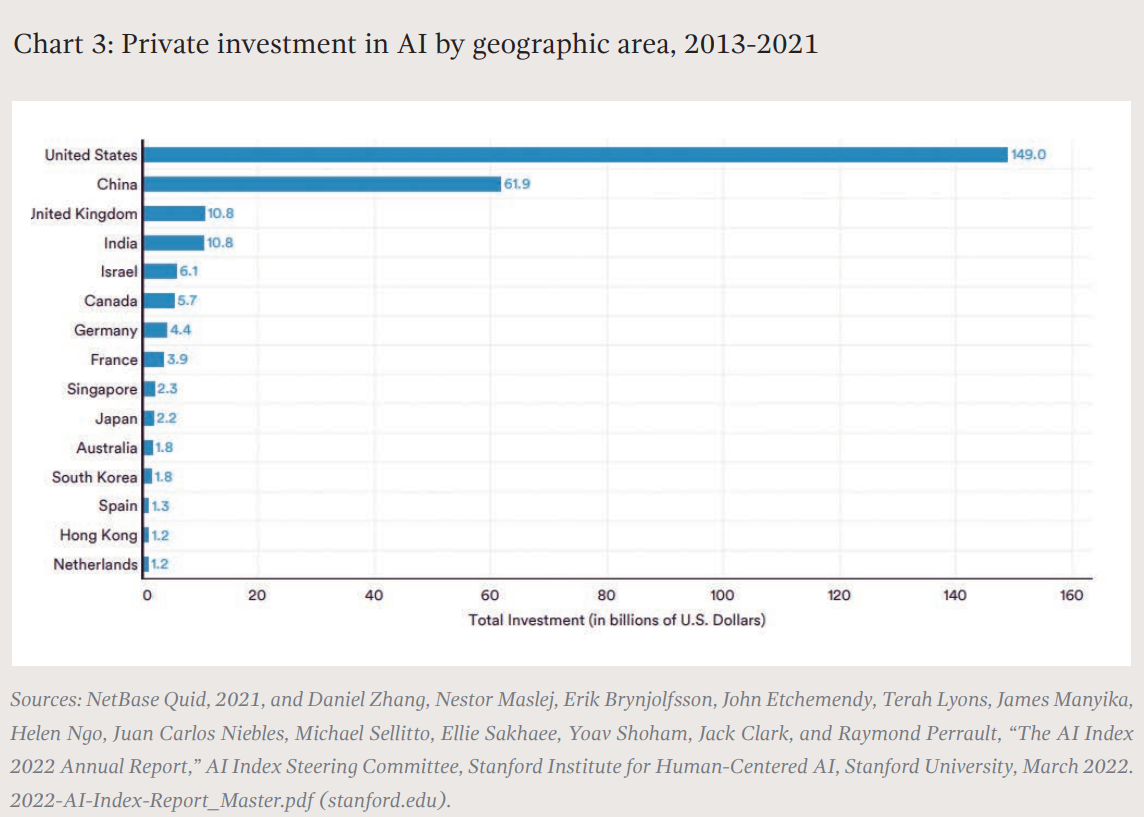
This certainly explains the Biden administration’s selective decoupling with China in the science and technology area. Geopolitical fault lines are beginning to form, with AI technology being a central domain of competition and conflict. Such vicious competition crystalizes an already threatened bifurcation of the world and seems to reaffirm the reemergence of two military and ideological blocs.
Preventing the first AI war in history
Just as Russia’s horrific invasion of Ukraine has evoked memories of the Cold War in Europe, China’s pressure campaign over Taiwan and the new U.S. Indo-Pacific strategy against China –– including the provocative moves to change the “one China policy” as evidenced by Speaker Pelosi’s visit to Taiwan –– are part of a vicious cycle leading toward the end of four decades of precious peace in the Asia-Pacific region.
If we cannot stop that trend, we may face a hot war that may escalate very quickly to an AI war between the United States and China — a potentially horrible machine to machine war resulting from lethal autonomous weapons systems (LAWS). One does not need to be a military expert to understand that, in the present-day Taiwan Strait with frequent military drills by all parties, the risk of accidents has been increasing exponentially.
Anyone should realize that a war over Taiwan, if it occurs, will have a far more catastrophic impact on the world than the ongoing Russia-Ukraine war. One may reasonably argue that neither China nor the United States is ready for an AI war, at least for now. But the sad truth is that the better prepared both sides are for a possible AI war, the more tragic the outcome may be.
Since 2019, the Brookings Institution and Tsinghua University have co-sponsored a U.S.-China Dialogue on Artificial Intelligence and National Security, a series of track-II (unofficial) dialogues. The project includes top AI experts, former government officials, retired military generals, and think tank scholars from both countries, who hope to help guide decision-makers in their respective countries to develop sound policy in the new AI era.
The Dialogue focuses on the key question: What role, if any, should the United States and China play in international norm-building and risk-reduction efforts related to AI-enabled military systems? The dialogue has explored issues and possible areas of consensus such as off-limits targets, off-limits data, proportionality and human oversight, and international norm-building. These kinds of bilateral engagements are critical to ensuring that thought leaders on both sides are speaking with each other and providing hope for future coordination — and even cooperation — on AI.
It is imperative for the international community, including citizens of the two AI superpowers, to work together to address various highly consequential challenges relating to AI in our time. These issues range from ethics, common norms, law, risk prevention for AI-enabled weapons, the security of AI data, mechanisms to prevent attacks on critical infrastructure, and protections for the integrity of global financial data, to public awareness and civil discourse.
Winston Churchill once said: “You can always count on Americans to do the right thing –– after they’ve tried everything else.” In the AI era, with the absence of the “revolving mechanism” or what President Biden has called “the guardrail of commonsense” in the U.S.-China relationship, we may not have the luxury to “have tried everything else.”
